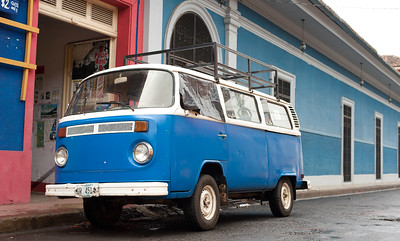The camper van can be an extremely challenging project. Essentially, you want to take a small living space and turn it into your house. There are many ways this can be done (some easier than others) but in the end, if you work hard enough, you’ll have the van of your dreams. Still, some are nervous when they start. Seeing as how many who wish to take the road less traveled are still living comfortably in their homes. Let’s take a look at what you’ll need to get started.
Selecting the Right Camper Van
When searching for your soon-to-be home on wheels, there are a number of factors you must look at if you are going to have a good time while on the road. These steps will ensure that you’re travels are an adventure and not a headache.
Finding the right van can be challenging, while age, make and model play huge factors, checking the odometer is your first step. Vans with under 100k in miles are typically a safe route. The cheaper the van, the more issues you will run into either immediately or down the road. Typically, a van with decent miles and low maintenance will cost you between $3-$4k. That is simply for the van itself. Many people will choose a Ford E-Series, Chevy G20, or a GMC Vandura. All of these are more on the vintage side of the van-life but all have great space features and can take a relative beating (the GMC Vandura was the iconic van of the A-Team). Now, you might not be driving your van through an explosion like B.A. Baracus, but you’ll want something heavy hitting.
Once you put the money down on your bus and you take it home. You need to have it professionally looked at. In my experience, I cannot say that I have ever purchased a van or bus without at least $3k worth of work that needed to go into it. So, you’re now at approximately $6K.
Possibly a VW Microbus/Vanagon
We included this option outside of the big three due to the age of the traditional hippie-wagon. While, yes, they are the staple in van-life, there are guaranteed problems that will cost you way more in the long run. Even the newer-ish Vanagon from the early ’90s will have you at the mechanic frequently. Another reason why you might not want to go this route is the totally underpowered engine. At 75 horsepower, this does not provide the necessary hauling capacity that you may need. Reliability is key, and having an air-cooled engine instead of a water-cooled engine has historically proven itself to be prone to issues. With the rarity of fully functional classic vans, an old one that barely works will run your budget through the roof.
There are specific reasons why someone would purchase a van like this, though. Many buy these vans due to the biodiesel conversion options. The old VW Bus used a diesel engine. These could quickly (and relatively cheaply) be converted over to a biodiesel form of alternative fuel. Now, finding a vat of cooking oil might be harder to find, but it will keep your engine cleaner, the emissions low and the environmental impact will be less burdensome.
Van Conversion: Layout
Once you have selected the right van, comes the challenges of figuring out where all your stuff is going to go. The idea of traveling in a camper van is to travel light. This means you won’t be bringing many of the luxurious amenities that you may be accustomed to. Remember, you’re living on the road. You don’t need a TV when the world is your entertainment. There are a few ways to set up your van, depending on which one you have purchased you have a lot of layout options.
One of the most common is having the bed sideways in the back, with a counter on one side for a stove/countertop/sink and the other contains storage shelves for your clothes and other various necessities. A mini-fridge should be placed underneath the sink area for optimal space. A good place to find floor-plans for your bus is simply Google. There you will find the right dimensions of your vehicle as well as on-grid diagrams. Once you have the layout figured, you’ll need supplies. This is where the next stage in your camper can cost money.
The general construction supplies are going to cost you approximately $2 grand. This includes the wood paneling for both the ceiling and the floor (and maybe a little more if you want to do the walls of the van), the bed, and storage supplies. Typically, if you needed tools this can be included in the overall cost and comes out to around $300.
Camper Van Construction
Constructing your van can either be extremely difficult or extremely fun and exciting. In my experience, its the latter. I have worked on both full-sized and short buses as well as conversion vans, sprinter vans, and SUVs. One of my favorite parts of the project is straight-up ripping everything out. From angle-grinders to kicking old dilapidated seats, its a blast. For others, the idea of throwing elbow-grease into a project is “scary”. For those who aren’t willing to put the time into the build process, I wish you good luck on your journeys. It only gets harder. Anyways, I digress. Constructing your van is an awesome experience.
Some of the hardest parts to constructing your van or bus comes from the deconstruction side of things. I’ll never forget the first time I worked on a camper. It was a 2005 GMC minibus. It hat 9 seats. Each fastened to the floor with huge bolts. There was no real way to unscrew each bolt as they were designed to not come out under any circumstances, so we used angle grinders. When each bolt was smoothed down to the floor, we kicked those suckers out.
From there, was the wheelchair lift. That thing was at least 400 pounds (including all the hydraulic components) and we had to take it out delicately. The reason for such a feathery removal was due to the fact that we had a buyer for it. Another thing to mention is that with the parts that you take out, you may (or may not) be able to sell them.
After all of those things were taken out, we had to remove the flooring. School buses are different from vans in that the floor is designed to last FOREVER. There are at least 4-5 layers that require stripping, and then you need to take the rest of the bolts out of the floor (the ones you angle ground down from the seats). When that’s all said and done, resheathing is the next step.
Insulation
One of the biggest and most frequently asked questions is the materials used to insulate your project. I always suggest using spray-foam insulation. Where standard home insulation will absorb all moisture and eventually decompose over time, spray foam is resistant to moisture. A few months down the line, you won’t need to replace all the inside panels just to replace your crumbling insulation. Always go with the spray foam.
Solar Panels
These are going to be another large purchase. Depending on how much you use technology or even simply to divert power in case your battery dies, you should invest in a set of solar panels. Utilizing these can help cut down on the wear and tear of your camper van. Many times while traveling, my battery has died. I either simply replaced it with a fully charged battery, or connected the solar panel wiring to the battery and charged it right on the spot. Diverting the power supply is a little trickier than simply replacing, but it’s actually cool to say “I’m diverting the power supply” if an issue happens. Having an extra battery (or 6 if you’re a survivalist) comes in extremely handy when on the road.
You need to power your fridge, hot-water or anything else that runs on electricity if you are going to live comfortably. If you don’t take this necessary step, then you will be sitting at a gas station for a couple of hours a day charging your stuff.






